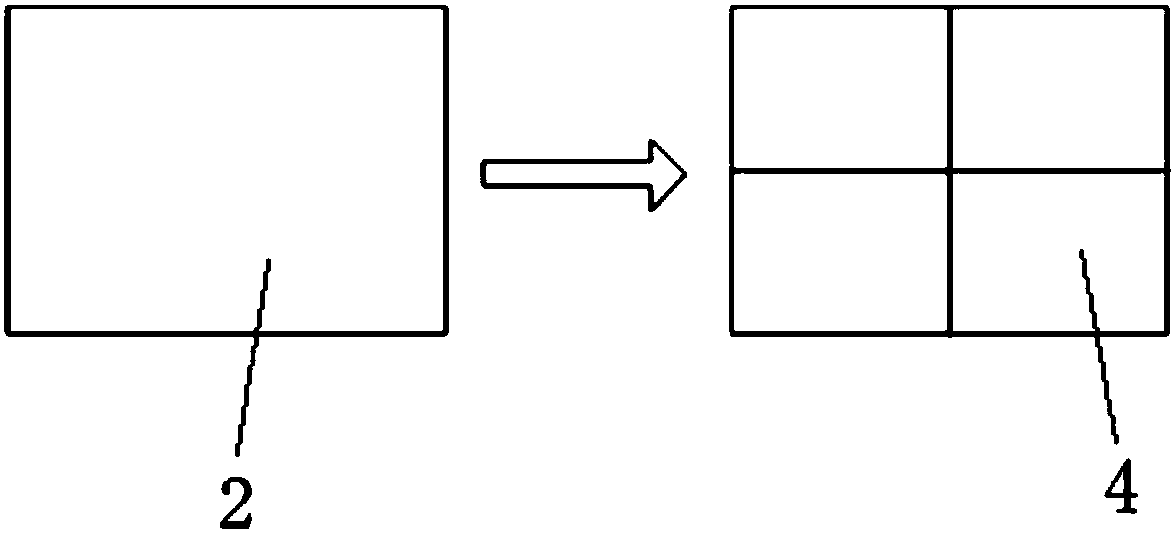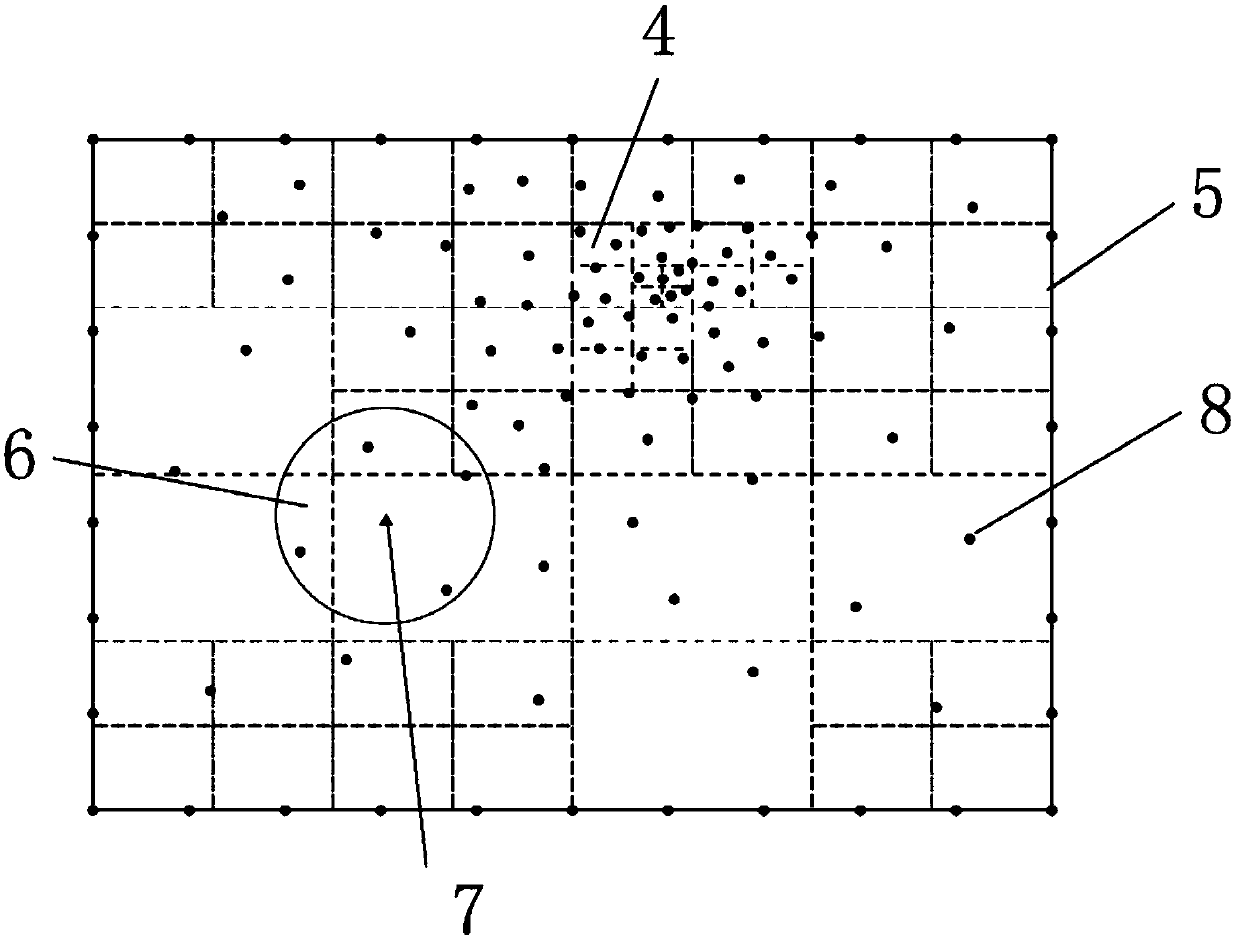Background grid adaptive segmenting method in DC resistivity no-unit method
A technology of self-adaptive subdivision and DC resistance, which is used in electric/magnetic exploration, re-radiation of sound waves, radio wave measurement system, etc., can solve the problems of increasing simulation cost, limiting the application of elementless method, and increasing the amount of calculation, etc. Achieve the effect of improving numerical stability, ensuring simulation accuracy, and improving computational efficiency
- Summary
- Abstract
- Description
- Claims
- Application Information
AI Technical Summary
Problems solved by technology
Method used
Image
Examples
Embodiment Construction
[0056] The present invention will be further described below in conjunction with the accompanying drawings and specific embodiments.
[0057] The DC resistivity observation and calculation method involved in the present invention comprises the following steps:
[0058] Step 1. The design of the parameter file of the forward modeling geoelectric model: according to the distribution of the dielectric resistivity in the two-dimensional geoelectric model, the geometric shape of the abnormal body and the terrain fluctuation, the confidence file of the discrete nodes of the model is set, and the electrode layout and the observation device are set. and element-free method-related parameters.
[0059] Step 2. Design of the adaptive background grid subdivision file: use a small number of rough and simple quadrilateral initial background grids to cover the computational domain, and input the vertex coordinate information of the initial background grid and the given adaptive control valu...
PUM
 Login to View More
Login to View More Abstract
Description
Claims
Application Information
 Login to View More
Login to View More - R&D
- Intellectual Property
- Life Sciences
- Materials
- Tech Scout
- Unparalleled Data Quality
- Higher Quality Content
- 60% Fewer Hallucinations
Browse by: Latest US Patents, China's latest patents, Technical Efficacy Thesaurus, Application Domain, Technology Topic, Popular Technical Reports.
© 2025 PatSnap. All rights reserved.Legal|Privacy policy|Modern Slavery Act Transparency Statement|Sitemap|About US| Contact US: help@patsnap.com



